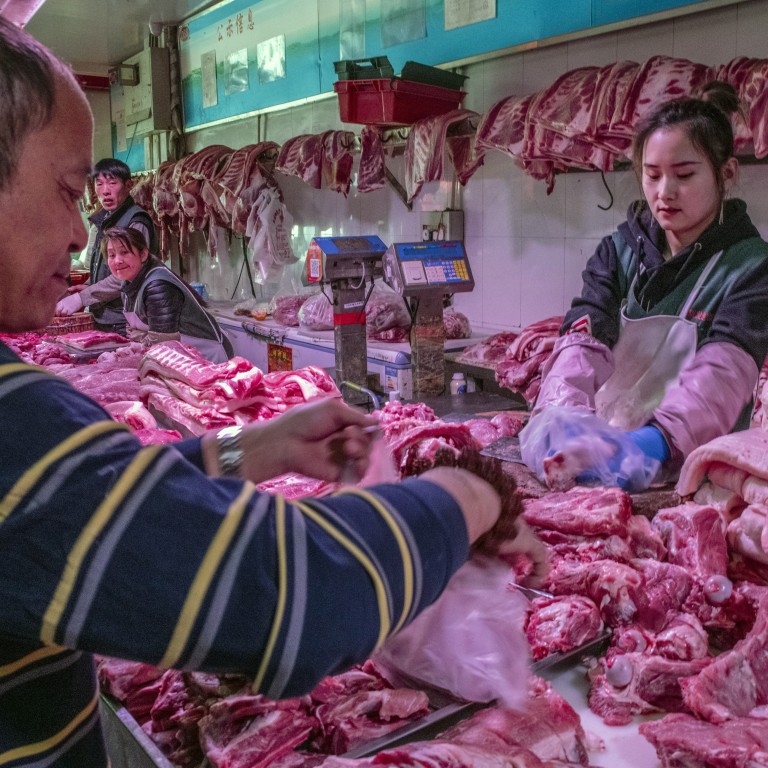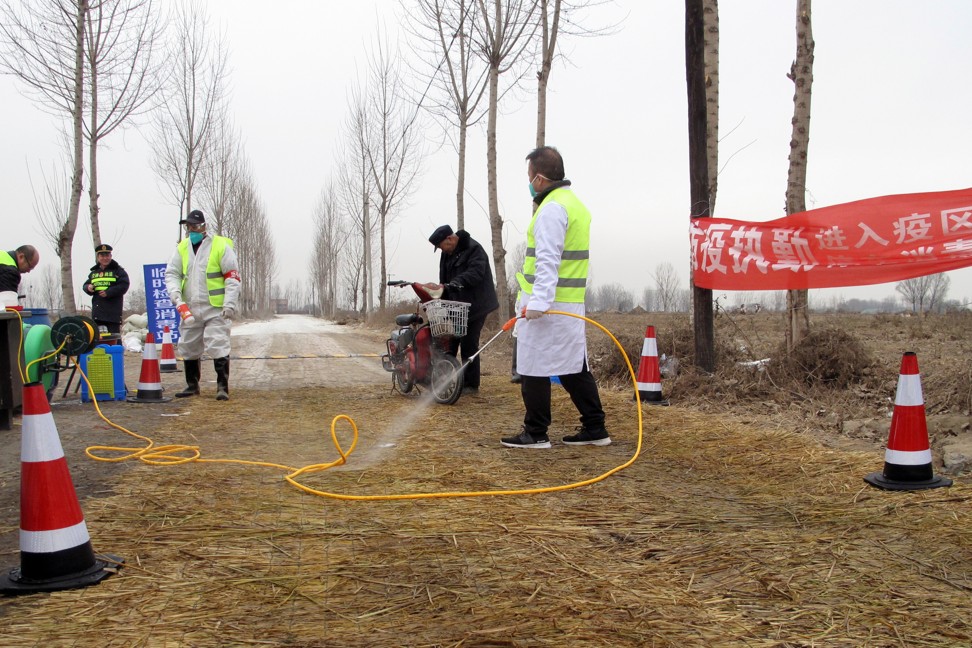
China’s African swine fever crisis ‘very serious’ with stocks falling and pork prices set to hit all-time high
- China has culled 1.02 million pigs since August, with a total of 129 cases discovered, according to the Ministry of Agriculture and Rural Affairs
- But industry insiders say the real situation could be much worse, with one report suggesting China could lose 200 million pigs during the epidemic
African swine fever has had a “very serious” impact on China’s pig industry, according to the Ministry of Agriculture and Rural Affairs, with stocks shrinking and pork prices expected to rise to an all-time high later this year.
China has already culled 1.02 million pigs since August, with a total of 129 cases discovered, said Wang Junxun, a deputy chief of the veterinary bureau of the Ministry of Agriculture and Rural Affairs, on Tuesday.
The number of sows, or mother pigs, has plunged 21 per cent in March from a year earlier, said Wang, pointing to a supply problem in the future. Pork prices rose only 2.1 per cent in the first week of March from a year earlier, but in the first week of April, prices increased by 36 per cent.
“Pork output will fall, and supply will be tight. The price of live hogs will hit new historical highs in the fourth quarter of this year,” said Wang.

According to China’s statistics bureau, the country still had 375 million sows, pigs and piglets as the end of March, a rapid fall from 428 million at the end of December.
But while the official picture is bleak, the real situation on the ground could be much worse, according to two industry insiders who had access to classified information about the situation. The executives at a state-controlled pork producer and trader declined to be named as they are not allowed to speak about the swine fever, but believe official statistics are being under reported.
Among the 129 cases reported by the Chinese government, all but six were at small farms that bred less than 1,000 pigs, according to a report published by brokerage Sinolink Securities last week.
“The [swine fever] situation at big pig farms is very serious, but the government is not fully reporting it,” said one of the sources. The source added that output at big pig farms could be reduced by 30 to 40 per cent.
The [swine fever] situation at big pig farms is very serious, but the government is not fully reporting it.
Based on field visits and research in China, Rabobank senior analyst Pan Chenjun backed up the claim that large pig farms may have under reported the outbreak.
“When it comes to the probability of being infected by the swine fever virus, the size of the farms doesn’t really matter. The geographical location of the farms matters far more,” she said.
Rabobank estimates that China could lose up to 200 million pigs to disease or slaughter during the epidemic, almost three times the pig population in the United States, adding that there is not enough pork in “the whole world combined” to fill the potential shortfall in China.
“The whole of the world’s pigs combined wouldn’t be enough for China. The over 20 million pigs raised in Denmark can satisfy the demand of just one Chinese city,” one of the executives at the Chinese state-controlled pork trading company said.
Sun Dawu, the chairman of Hebei Dawu Agriculture Group, a company that operates pig farms in Hebei province, said that African swine fever in the province is much more serious than the official figures indicate because many cases have not been reported, adding to long held fears that local authorities have been under reporting the seriousness of the situation.
“The majority of pig farms in Hebei have found cases of swine fever, and the situation is similar in neighbouring Henan and Liaoning provinces. Most cases were not reported,” said Sun.
The majority of pig farms in Hebei have found cases of swine fever, and the situation is similar in neighbouring Henan and Liaoning provinces. Most cases were not reported.
About 15,000 pigs died from the fever in Xushui County in Hebei province in February, according to Sun, but the local authority failed to report it. China’s agriculture ministry later confirmed that the first case of African swine fever in Hebei province had occurred in Xushui County, but did not confirm the number of pigs that had died.
A shortage of pork is promoting China to source supplies from other countries, including the United States, even though China had been trying to exclude American pork imports as part of the tit-for-tat trade war.
China was the largest importer of US pork at the start of April, despite tariffs of up to 70 per cent, with purchases totalling 101,200 tonnes, according to the data from the US Department of Agriculture. In comparison, China’s total pork imports in the first two months of the year totalled 207,000 tonnes.
The US Department of Agriculture estimated in a March report that China will increase pork imports by 33 per cent year-on-year to 2 million metric tonnes in 2019.


